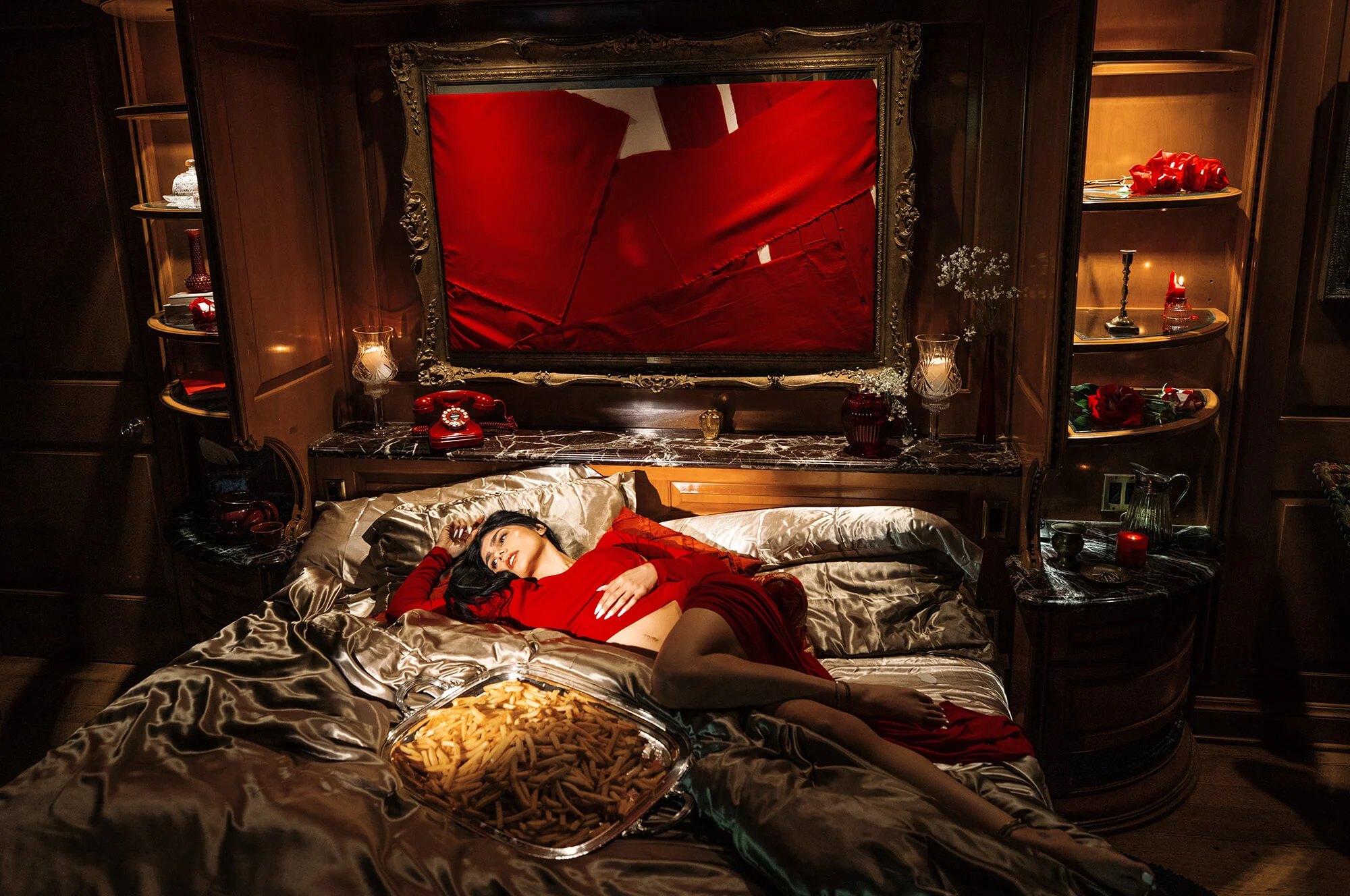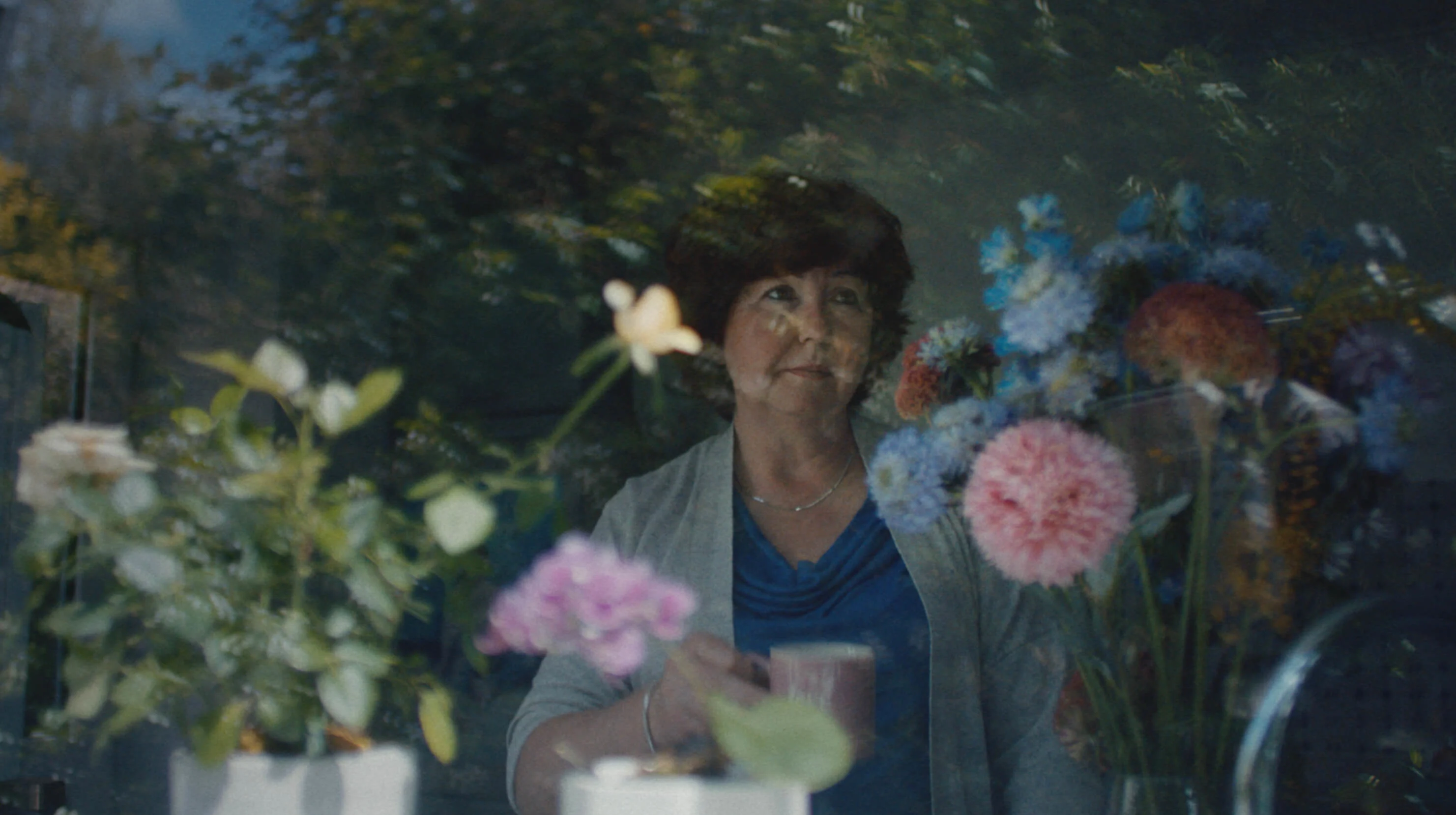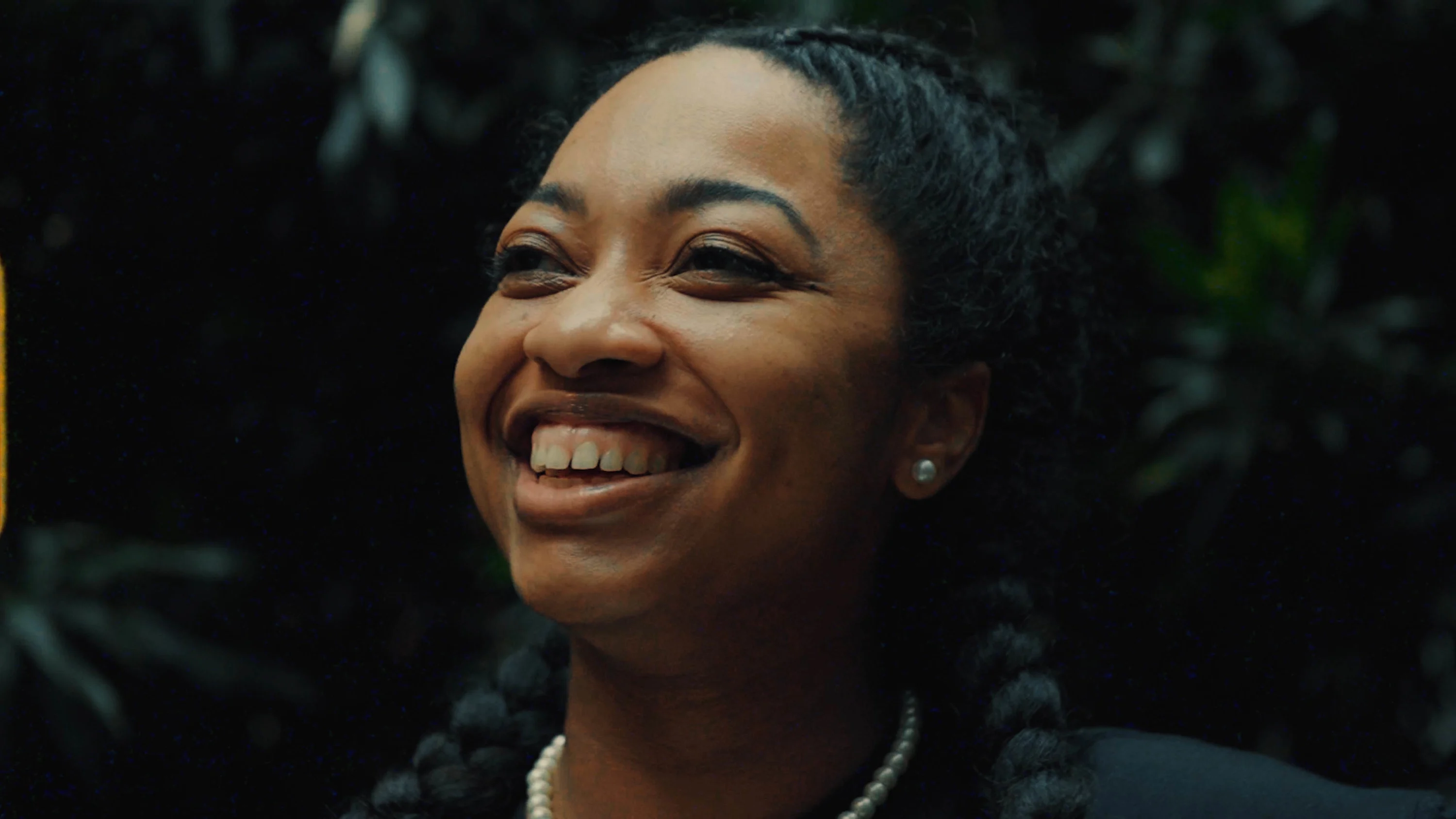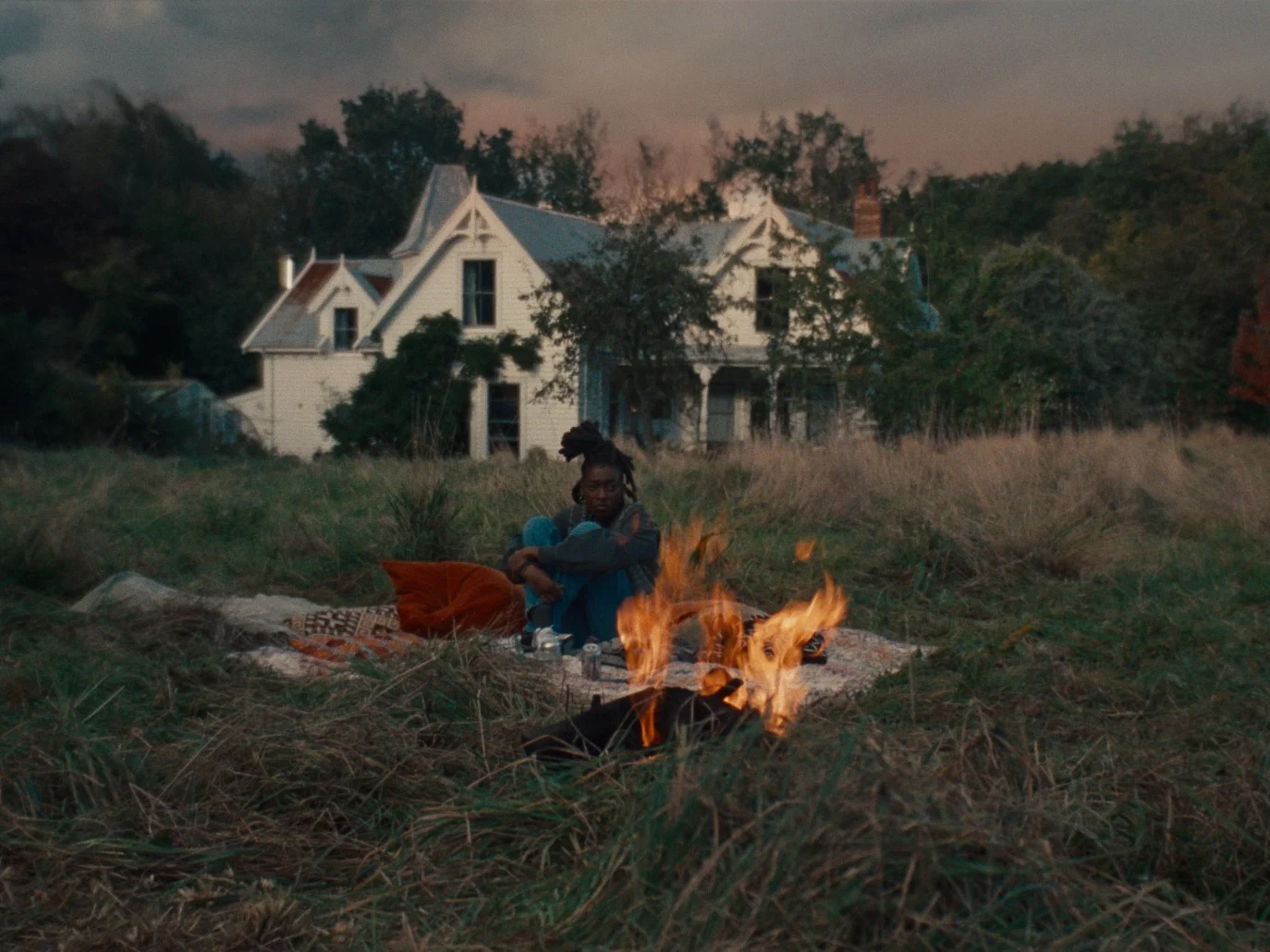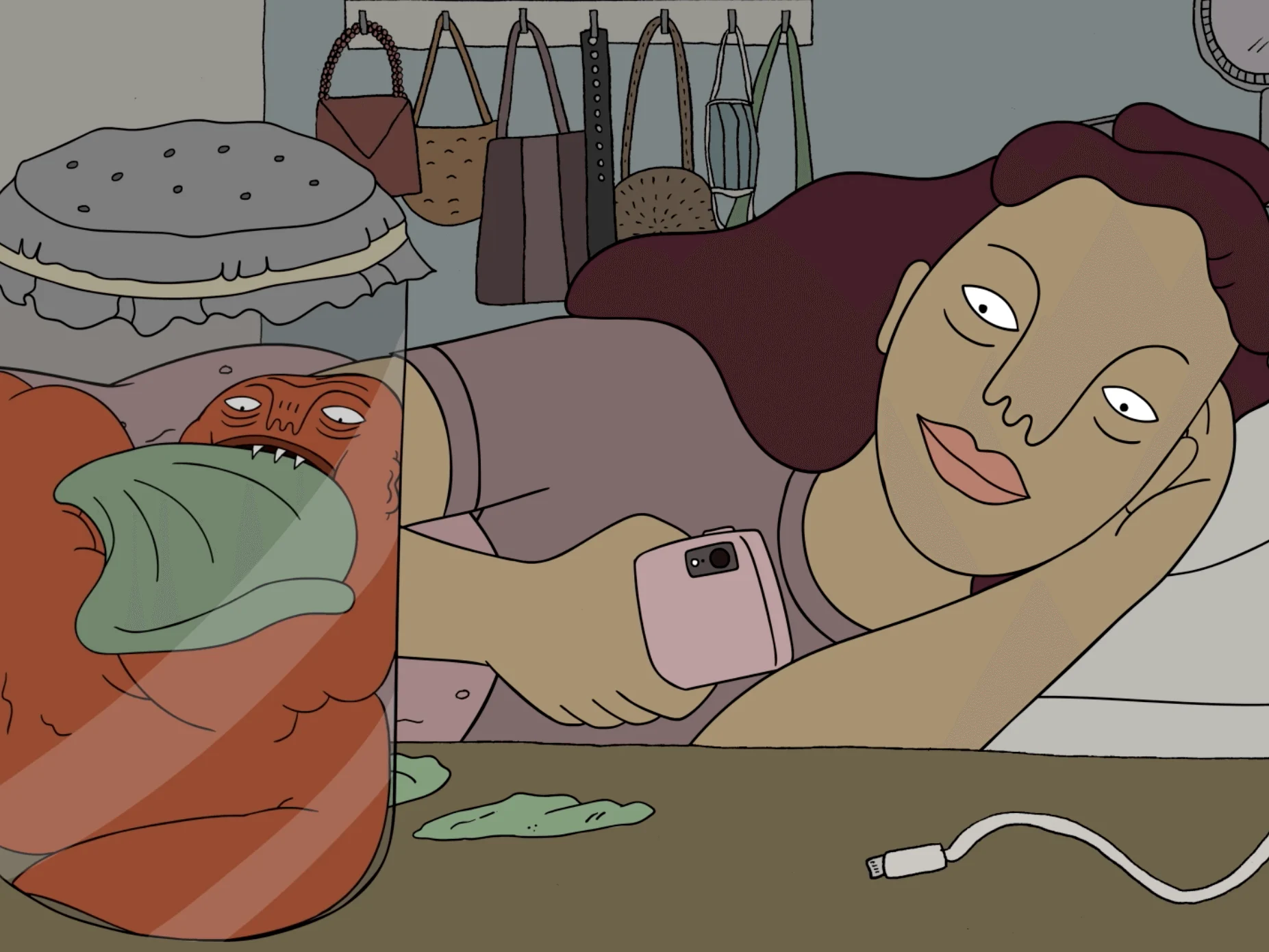

Since making their names as ubiquitous child stars and mini merch moguls, Mary-Kate and Ashley Olsen have largely retreated from the spotlight. And yet interest in their every outfit and movement has only intensified. To coincide with the release of director Zara Meerza’s short film “The Twins”, commissioned by WePresent, writer Raven Smith unpicks the public’s—and his own—fascination with the duo, from the chic they embody to the mystery that surrounds them.

Every time I see a picture of Mary-Kate and Ashley Olsen, I scan it for clues. Maybe they’re at the Met Gala dressed as luxurious elves, or sipping portable cocktails courtside, or papped—as they often are—smoking outside the TriBeCa studio that houses The Row, the clothing brand they founded in 2006. Maybe there’s only one of them and she’s strolling in the forest with a machete and a beer, or getting lost in a sad little square of a divorce Zoom.
I don’t think I’m alone in truffle-pigging images for morsels of true twin. “Where’s she going?” I might ask. “What’s she plotting?” And there’s always the question of what she is wearing—or not so much what she is wearing, as who and how. It is the specific alchemy of the outfit that draws me in: the deliberacy, the draping, the mirroring when they’re together. But if I have questions, they rarely offer answers.

Our communal love for the twins is quieter and chicer, a refined mass-hysteria so different from the usual dizziness of modern stan-dom.
Director Zara Meerza explores this collective obsession with the Olsen twins in her short film The Twins, commissioned by WePresent. Their cultural impact and legacy are carefully unstitched, ready to be understood in component parts like the pattern pieces of a The Row coat.
The film reminds us that thousands of women (and quite a few men) have been long-term fascinated by the duo, but also that this perpetual intrigue isn’t frenzied. Our communal love for the twins is quieter and chicer, a refined mass-hysteria so different from the usual dizziness of modern stan-dom.
By today’s standards, Mary-Kate and Ashley Olsen are anomalies. Not to sound like a supply teacher on his first day, but we live in hyper-connected times, where talk is currency and “your truth” turns a buck. (Kim Kardashian, god bless her, has effectively founded an empire on sharing.) When every passing cloud of a thought is expressed into the digital ether, the Olsen twins are silent. No tweets. No TikToks. Few interviews. Their discourse is distinctly offline, developed behind closed doors.
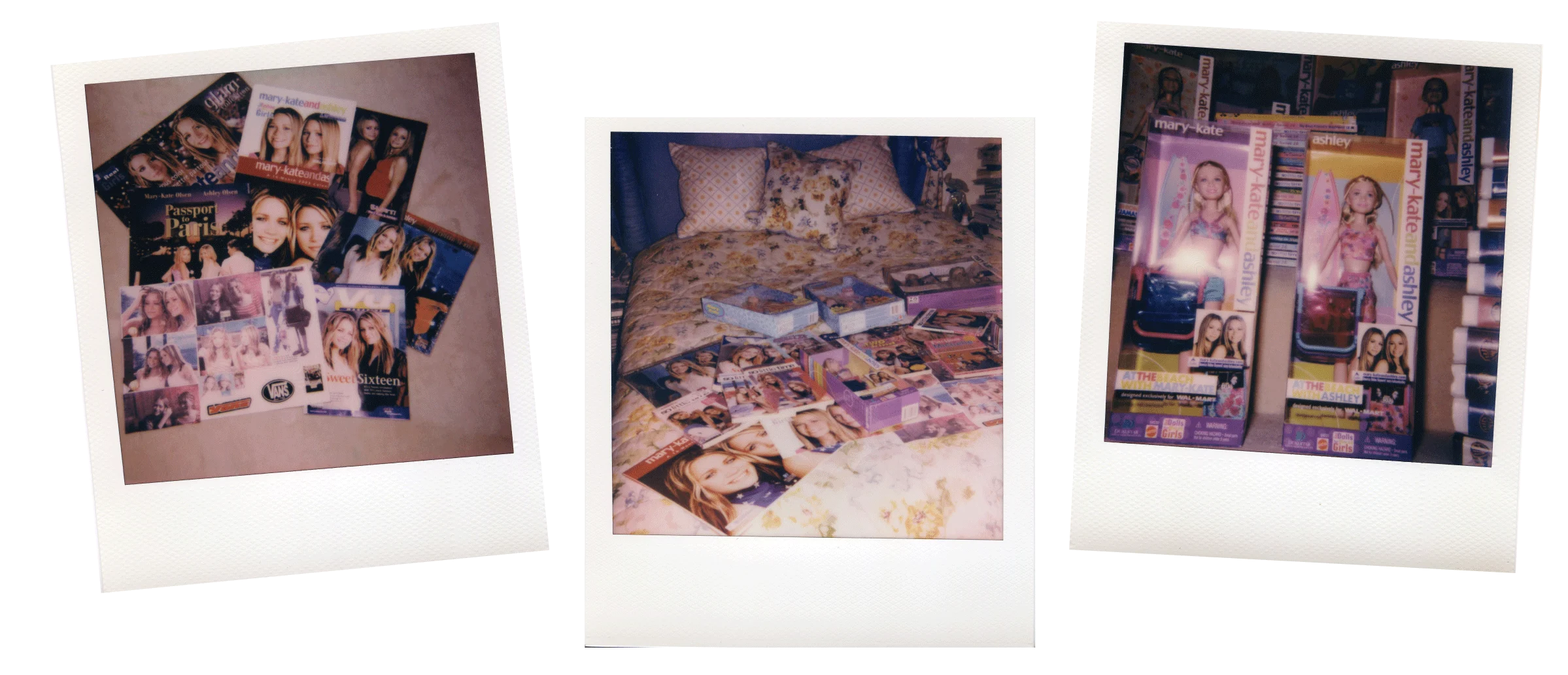
The twins are purveyors of their own mystique, as much unspeaking sculptures as the Noguchi bronzes among which they presented The Row’s AW18 collection.
“Because of social media, there’s just no mystique about anyone anymore. [Our relationship with the Olsen twins] is an old-school form of fandom that doesn’t really exist anymore. We only can get what they choose to give us; it’s not like we can seek things out,” says Meerza.
The twins are purveyors of their own mystique, as much unspeaking sculptures as the Noguchibronzes among which they presented The Row’s AW18 collection. Staring at their pictures, I am none the wiser. They are tandem sphinxes, lips pursed, toking on Marlboros.
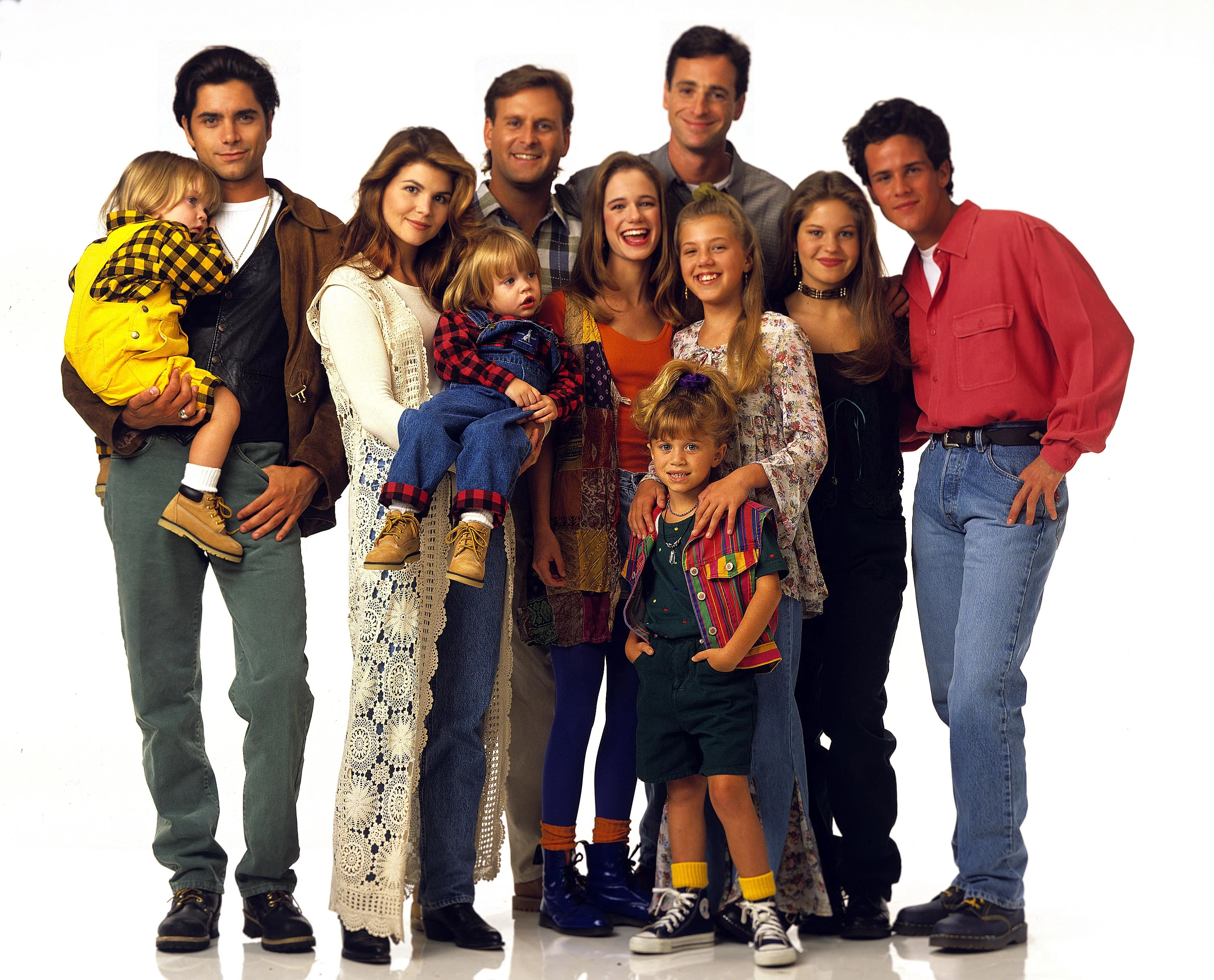
Shall we start with a potted history of Mary-Kate and Ashley? I’m older than the Olsens, yet I can’t remember a time without them as ingredients in the gumbo of popular culture. They were born on June 13 1986, and started acting nine months later, sharing the role of Michelle Tanner on the ABC sitcom “Full House.” Off the back of this, they built a successful empire on films made for TV or released on VHS. None stirred Oscar whispers for the budding actresses, they were able to market a very blonde, very controlled cuteness. The twins embodied a certain “Sweet Valley High”-ness, a saccharine pre-sexiness.
The impressionable young girl market is huge, and Mary-Kate and Ashley Olsen cashed in, licensing a raft of tat for tweens, all in the name of easily consumable hyper-commercialism. They had a fan club that would send subscribers monthly gifts and, for a while, published their own magazine. Young girls are often derided, but their spending power is incredible: in 2007, the Olsens were collectively ranked as the 11th-richest women in entertainment, with an estimated net worth of $100 million.
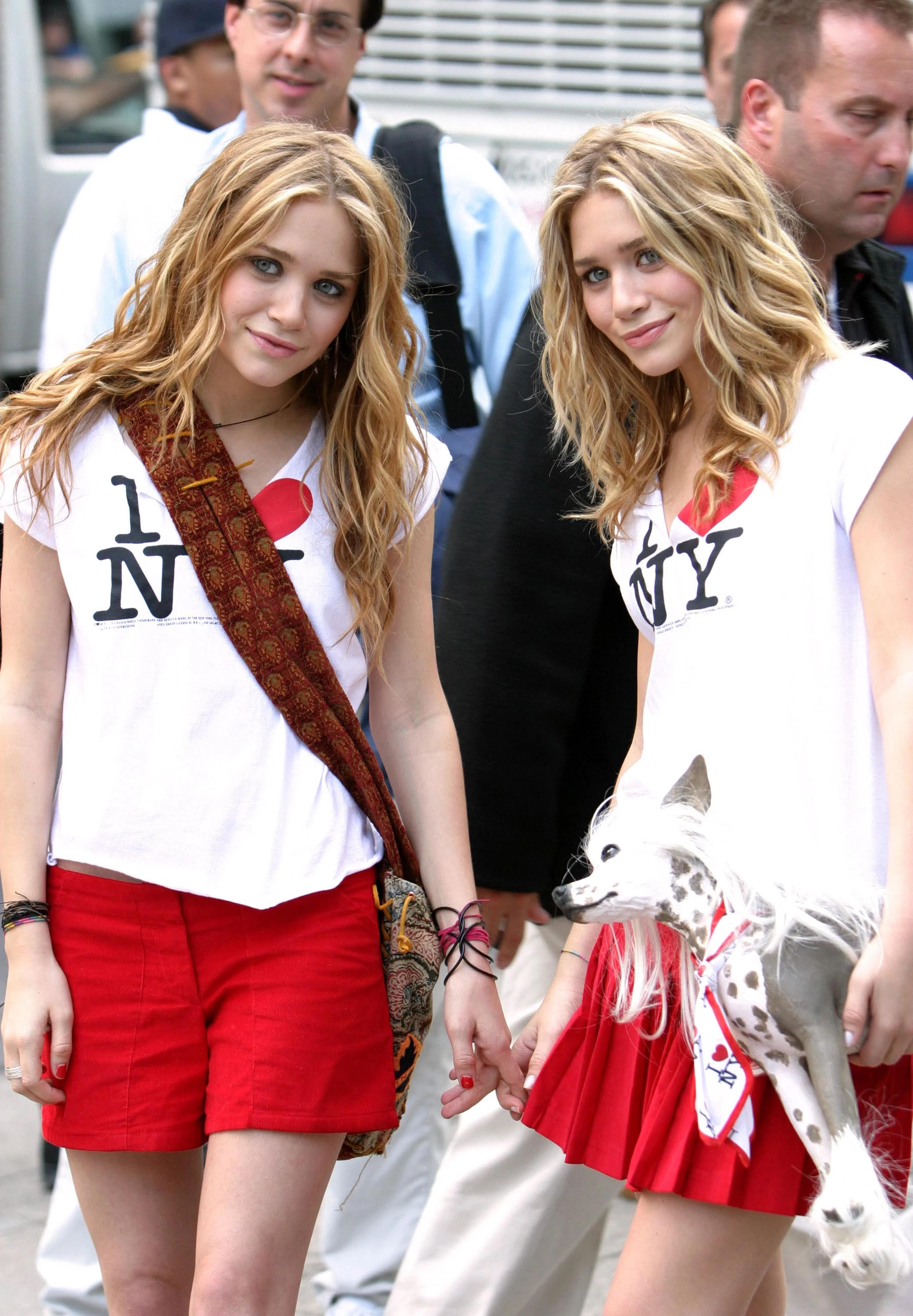
“With the exception of like two things they produced, they own all their own IP for everything they’ve ever made,” Meerza says. “In that sense, business-wise, they’re phenomenally robust.”
Okay, a few creepy things did happen. There were the internet clocks counting down to their 18th birthdays—the kind of hidden-in-plain-sight misogyny that defined the early strokes of this millennium. Powered by venti Starbucks, the twins attended New York University, but dropped out after classmates sold stories about them to the press.

Rumors have always plagued the girls too, but always with a flavor of glamor. Mary-Kate was reportedly carried out of Oasis’s dressing room after a New York gig in 2005 (chic as hell), and she allegedly almost threw up on Penelope Cruz at Naomi Campbell’s 35th birthday party (inherently chic). And I don’t know what’s chicer: that there were reportedly “bowls and bowls filled with cigarettes” for guests to smoke at Mary-Kate’s 2015 wedding to Olivier Sarkozy, or that the groom was the half-brother of former French president Nicolas.
But the child star clichés didn’t hold true for them. They neither fizzled out into obscurity, nor did they morph into adult actresses; they never had to pull a Macaulay Culkin and divorce their parents; they never truly went off the rails. They pivoted their careers away from acting, and turned instead to fashion, their sugar sweetness crystallizing to Maldon salt as they evolved an alluring sense of restraint. That’s part of the intrigue for me, too—how many child stars are able to shed their child stardom, and mutate into people that are genuinely cool?
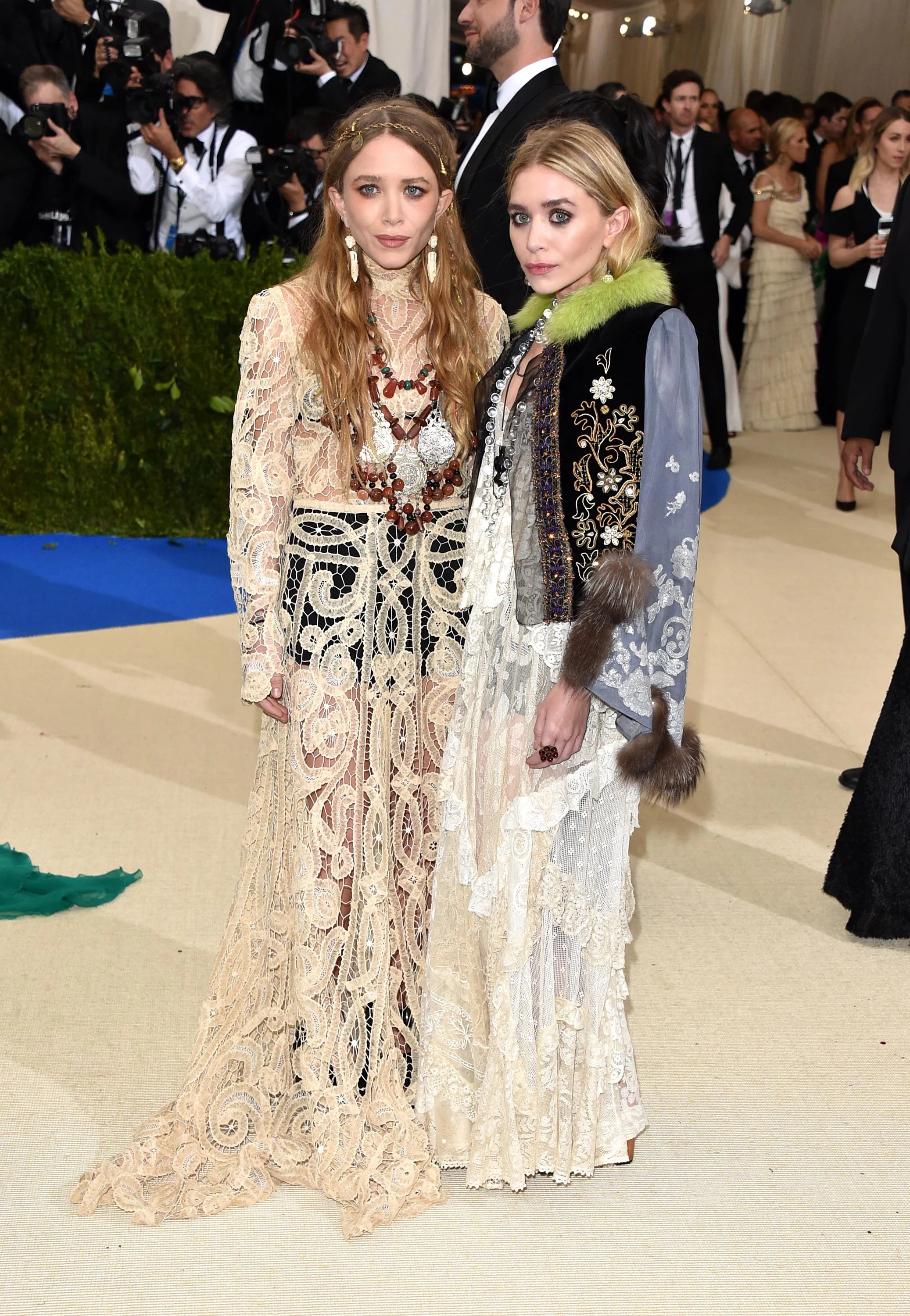
I’m going to talk about the clothes, even though dissecting the mechanics of elegance is tricky, subjective as it is. The collections all cater in apparel that sounds unremarkable in writing—a three-piece suit in charcoal gray, a slightly belled sleeve in deepest biscuit. But to think of The Row garments as technical orchestrations of cloth in myriad shades of taupe misses the point. The collections are realizations of an ideology, paraphrasing a specific way of being. That’s true of all designers, or course, but the perpetuating Olsen mythology is one of discretion and restraint, a way of displaying without showing off, a clarified consumé of refinement. It’s relaxed luxury, minimal to the point of near monastic austerity. (I know this verbal salad perhaps sounds like utter garbage to anyone who works outside fashion, but that’s the sweetest spot for anyone on the inside.)
Meerza has a more accessible take on the fashions: “It’s genuinely very thoughtful and considered tailoring, and not trendy in any way. It’s not pandering to anything other than a very specific kind of taste.” Specificity is the key to The Row. It’s the nuance of high design that’s got us hooked.”


Celebrity lines aren’t necessarily the go-to for the industry elite. And by elite, true elite, I mean the editors—the influential women and men who, despite the business requirement to report on all fashion shenanigans, are hyper selective to the point of mania about what they wear on their bodies. These gatekeepers of taste, these extremely picky fuckers, are less victims of fashion than delectable enthusiasts, searching for deeply woven tales rather than transient garmentry.
I can go days without them crossing my mind, but my interest never wanes.
On paper, a fashion line run by former child stars should be naff by default. But The Row is catnip for not only editors, but stylists and supermodels, too.
Part of what keeps The Row feeling so exclusive, so premium and rarefied, is the price. (A $39,000 alligator backpack doesn’t scream accessibility, does it?) But that’s all part of being in the club, of being in the know. Owning The Row is a nod to your own exceptional taste and access. It’s a secret handshake for the Freemasons of chic.

Perhaps at the end of the day, we’re all Mary-Kates looking for our Ashleys.
I’m not properly obsessed with the Olsens, more eternally interested. I can go days without them crossing my mind, but my interest never wanes. I’m reassured each time they cross my path. Their presence, albeit via paparazzi shot and clothing drop, represents a quiet equilibrium in my life. They’re still out there, still mysterious, still glamorous.
To outsiders, being a twin is a fascinating visual echo, attractive and odd in equal measure, but having a life companion from birth is rather fab, a forever counterpart. There’s surely a level of self-assuredness that comes from having someone in your corner every day of your life. Meerza puts it better than I ever could: “There’s something really powerful about them being pure individuals, but still so united.”
And does it not seem quite appealing to have a life partner that looks like you and helps you flourish? Lifting you up and keeping you enviably chic? Perhaps at the end of the day, we’re all Mary-Kates looking for our Ashleys.


